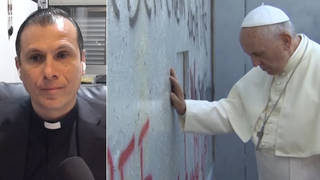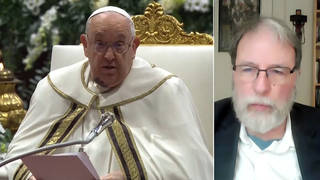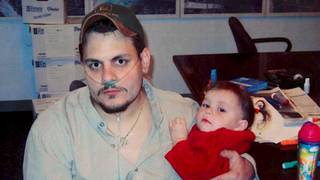
Topics
A new congressional study has revealed the Environmental Protection Agency misled Lower Manhattan residents about levels of indoor air contamination after 9/11. The report was released during a Senate hearing Wednesday on the EPA’s response after the collapse of the World Trade Center. James Connaughton, the chair of the White House Council on Environmental Quality, was questioned about whether the Bush administration manipulated public information about the health dangers following the collapse. [includes rush transcript]
Transcript
AMY GOODMAN: Speaking of debates, today we’ll look at healthcare.
JUAN GONZALEZ: Yes. A new congressional study has revealed that the Environmental Protection Agency misled Lower Manhattan residents about levels of indoor air contamination after 9/11. The report lambasted the EPA for giving residents “a false sense of security.”
The Government Accountability Office report was released during a Senate hearing Wednesday on the EPA’s response after the collapse of the World Trade Center. Senators repeatedly questioned James Connaughton, the chair of the White House Council on Environmental Quality at the time, about whether the Bush administration manipulated public information about the health dangers following the collapse.
Senators Hillary Clinton and Frank Lautenberg both questioned Connaughton about a 2003 EPA inspector general report, which claimed that he personally — or his staff — edited EPA press releases.
SEN. HILLARY CLINTON: So, let me ask, did you convince EPA to add reassuring statements and delete cautionary ones?
JAMES CONNAUGHTON: I think those characterizations by the inspector general were incompletely formed and inaccurate.
SEN. HILLARY CLINTON: But let me show you. The EPA IG report contains several specific examples of these type of changes, and one of them is reproduced on a chart that I’ve brought today. And let me see if — it’s impossible to read, but as the chart shows, a draft September 13, 2001, press release stated that — and I quote — “preliminary results of EPA sampling activities” — the thousands of samples that Ms. Bodine referred to — “indicated no or very low levels of asbestos. However, even low levels, EPA considers asbestos hazardous and will continue to monitor and sample for elevated levels of asbestos and work with appropriate officials to ensure awareness and proper handling, transportation and disposal of potentially contaminated debris or materials.” That was the original draft. The final release stated that — and I quote — ”EPA is greatly relieved to have learned that there appears to be no significant levels of asbestos dust in the air in New York City.”
SEN. FRANK LAUTENBERG: Why does the White House seem — why do they seem so focused on preventing the raw truth to the public? Why did you feel it necessary in CEQ to review press statements and change things that were in there that might have been of more concern, but more candid?
JAMES CONNAUGHTON: We don’t.
SEN. FRANK LAUTENBERG: Well, you did then, according to the reports that we see, that there were modifications of words and statements, that you were the final decision-maker in terms of what was allowable, what could go to the press. There are lots of things that stress the fact that no releases were to go out without the approval of the administration, and that would have been you.
JAMES CONNAUGHTON: I disagree with your conclusion, Senator.
JUAN GONZALEZ: That was James Connaughton. Prior to his confirmation as the chair of the White House Council on Environmental Quality, Connaughton worked the mining, chemical, utilities and asbestos industry. See Correction Below Almost six years after the attack, there has been no congressional funding devoted to the environmental health impact of the collapse on Lower Manhattan residents.
On Wednesday, Senator Clinton announced a subcommittee proposal requesting $55 million for precisely such a program that would screen and treat all individuals exposed to Ground Zero dust. Of the thousands of ailing 9/11 responders who have been getting sicker and sicker while waiting for treatment and benefits, does this hold any promise?
Text of Correction Read on Air on June 25: On Thursday, we aired excerpts of a Senate hearing on the role of the White House Council on Environmental Quality in shaping the EPA’s response to air quality issues in New York after the collapse of the twin towers. After our show was aired, James Connaughton, the chair of the White House Council on Environmental Quality, wrote to Democracy Now! requesting a correction to our statement that he previous worked for the asbestos industry. We should have more accurately stated that Mr. Connaughton, while a partner at the law firm of Sidley Austin, represented corporate giants like General Electric and ASARCO in their battles with the government over clean-up of Superfund fights. ASARCO was forced into bankruptcy in 2005, claiming mounting asbestos litigation claims. Prior to his work on behalf of those corporations, Connaughton represented asbestos victims as a young lawyer in some cases against asbestos manufacturers.













Media Options